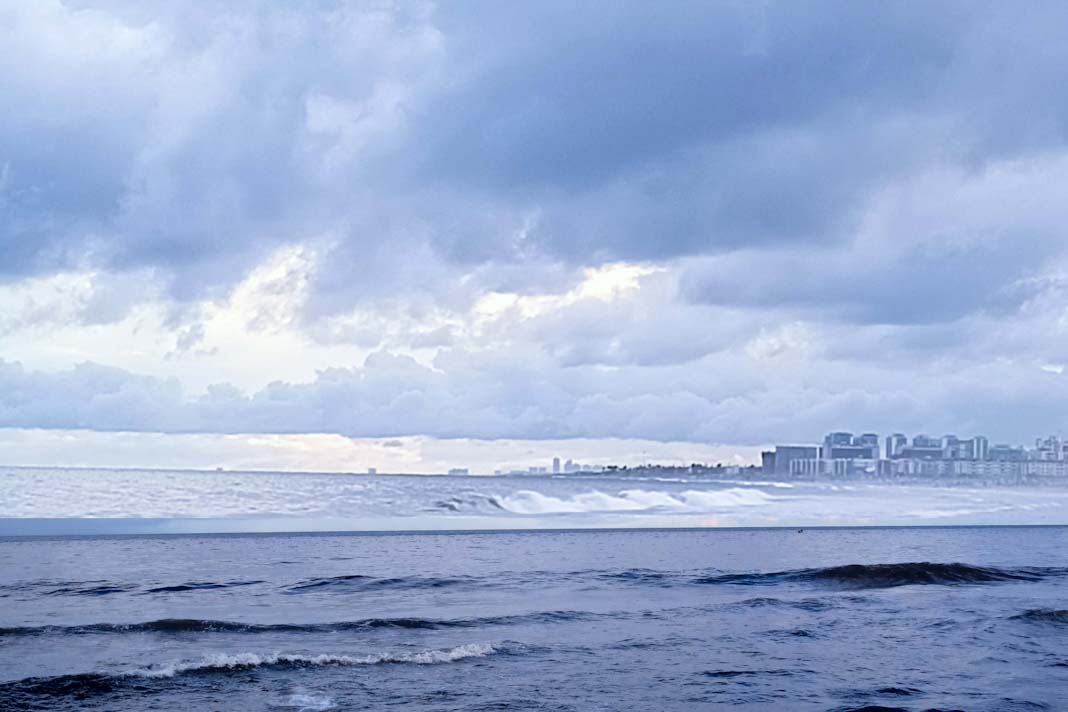A supramax bulk carrier transporting wheat for human consumption from a European port to a Middle Eastern port experienced cargo quality issues upon discharge. The report is based on official inspection findings during the cargo unloading process.
What Happened
The vessel loaded wheat over a period of two weeks. Cargo was transferred both from a barge alongside and directly from the quay, where lorries dumped wheat onto a steel plate. A ship crane then loaded the cargo into five holds. Loading was interrupted by rain on 12 occasions, during which cargo remaining on the steel plate was returned to lorries and removed from the quay. No drying protocol was documented beyond returning cargo to lorries.
Poor visibility during loading, due to early nightfall at around 1600 hours, limited the crew’s ability to observe cargo condition in the holds, and no additional lighting was installed. Fumigation with aluminium phosphide tablets was applied before departure, with seals on the cargo holds and tape/foam used on hatch covers to prevent gas leakage.
At the discharge port, inspection revealed that almost all cargo in hold three was infested and displayed lumpy, wet-damaged characteristics. Cargo in other holds remained in good condition. A salinity test confirmed that there was no saltwater damage. The receiver rejected the remaining cargo in hold 3, and further unloading was halted.
Why It Happened
The cargo damage occurred primarily due to wet wheat being loaded onto the vessel during repeated rain interruptions, which resulted in water exposure before the cargo was stowed in the holds. Poor visibility during early evening hours further limited the crew’s ability to observe the condition of the cargo or detect wetness in the holds. Additionally, fumigation in hold 3 was likely ineffective, possibly because this hold was not sufficiently tight to retain the fumigant gas, unlike the other holds.
Gas leakage during the voyage may have further reduced the effectiveness of fumigation. Contributing factors also included the absence of documented procedures for closing hatch covers during rain and for inspecting cargo condition during loading, as well as insufficient lighting and a lack of proactive weather monitoring. Collectively, these factors led to insect infestation and wet-damaged cargo in hold three, while the remaining holds remained in good condition.
Actions Taken
The vessel underwent fumigation before departure. At the discharge port, authorities inspected and unsealed the cargo holds. No further corrective actions were reported during the voyage, and unloading of hold three was stopped after inspection confirmed cargo infestation and wet damage.
Lessons Learned
- Ensure cargo is not exposed to rain during loading and that cargo on the quay is adequately protected.
- Verify that all cargo holds are sufficiently weather-proof before departure, recognizing that hatch covers cannot be fully gas-tight.
- Inspect rubber packing on hatch covers for integrity; ultrasonic testing is recommended.
- Provide adequate lighting to inspect cargo during low-visibility conditions, and monitor weather forecasts to close hatch covers in advance of rain.
- Record cargo condition in the deck log and take formal actions, such as issuing letters of protest, noting the mate’s receipts, and creating causal bills of lading when wet or damaged cargo is observed.
- Ensure fumigation procedures are appropriate for each hold, including sufficient gas retention to ensure effective insect control.
Did you subscribe to our Daily newsletter?
It’s Free! Click here to Subscribe!
Source: Swedish Club

















